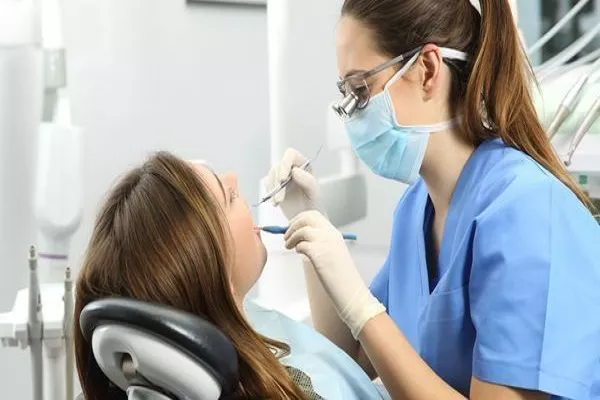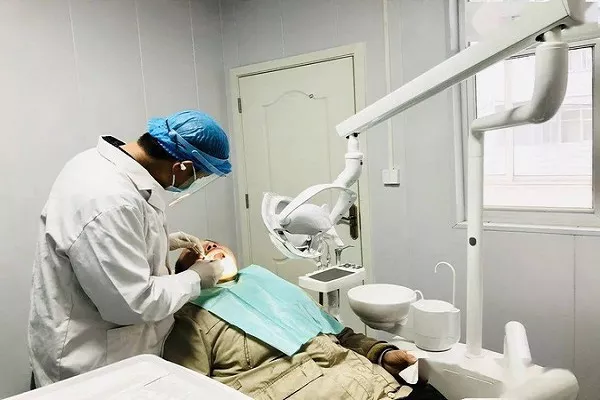A dazzling smile is often considered one of the most attractive features, but yellow plaque nestled between teeth can be a significant aesthetic concern. Not only does it affect our confidence, but it also signals potential oral health issues. In this comprehensive guide, we will delve into the causes of yellow plaque between teeth and unveil professional strategies to eliminate it, restoring your pearly whites to their former glory.
Understanding the Causes
Before diving into solutions, it’s crucial to comprehend the root causes of yellow plaque between teeth. Plaque is a soft, sticky film of bacteria that constantly forms on your teeth. When not removed through regular oral hygiene practices, it can harden into tartar, appearing yellow or brown. Several factors contribute to the formation of yellow plaque, including:
Poor Oral Hygiene: Inadequate brushing and flossing allow plaque to accumulate and harden, leading to yellowish stains.
How to Remove Yellow Stains from White Teeth
Smoking or chewing tobacco not only stains teeth but also contributes to plaque buildup.
Dietary Habits: Consuming sugary and acidic foods promotes bacterial growth, exacerbating plaque formation.
Dry Mouth: Reduced saliva flow can lead to plaque buildup, as saliva plays a crucial role in neutralizing acids and washing away bacteria.
Inadequate Dental Check-ups: Regular dental visits help in the early detection and removal of plaque, preventing its progression to a yellowish, hardened state.
Professional Dental Cleaning
The cornerstone of tackling yellow plaque between teeth is professional dental cleaning. Dentists have specialized tools and expertise to remove stubborn tartar that regular brushing and flossing might miss. This process, known as scaling and root planing, involves scraping off plaque and tartar from the tooth surfaces and below the gumline.
During your dental cleaning, your dentist or dental hygienist will use ultrasonic scalers and hand instruments to carefully remove the accumulated plaque. While this procedure is highly effective, it’s essential to complement it with a robust at-home oral care routine to prevent future plaque buildup.
Optimal Oral Hygiene Practices
Achieving and maintaining a plaque-free smile requires a diligent oral hygiene routine. Here are some expert-recommended practices:
Brushing Techniques: Use a soft-bristled toothbrush and fluoride toothpaste. Brush at least twice a day, focusing on each tooth surface and angling the brush to reach between teeth.
Flossing Regularly: Flossing is crucial for removing plaque from areas your toothbrush can’t reach. Make it a habit to floss once a day, gently guiding the floss between each tooth and along the gumline.
Mouthwash as a Supplement: An antimicrobial mouthwash can help control bacteria and freshen breath. Consult your dentist for recommendations tailored to your oral health needs.
Tongue Cleaning: Use a tongue scraper to remove bacteria and debris from the tongue’s surface, as this can contribute to plaque formation.
Stay Hydrated: Drinking plenty of water helps maintain optimal saliva production, promoting a self-cleaning action in the mouth.
Home Remedies for Yellow Plaque
In addition to professional dental care and optimal oral hygiene practices, certain home remedies can complement your efforts in eliminating yellow plaque between teeth:
Baking Soda and Hydrogen Peroxide Paste: Create a paste using
baking soda and hydrogen peroxide, and gently brush your teeth with it. Baking soda acts as a mild abrasive, while hydrogen peroxide has antibacterial properties.
Oil Pulling with Coconut Oil: Swishing coconut oil in your mouth for 15-20 minutes daily can help reduce plaque and bacteria. The oil pulls toxins from your mouth, promoting overall oral health.
Activated Charcoal: Brushing with activated charcoal may help absorb plaque and surface stains, although its long-term effects are still under research.
Strawberry and Baking Soda Mixture: Mash strawberries with baking soda to create a natural teeth-whitening paste. The malic acid in strawberries can help break down surface stains.
Apple Cider Vinegar Rinse (with Caution): Dilute apple cider vinegar with water and use it as a mouthwash. Its acidity can help break down plaque, but be cautious, as excessive use may erode tooth enamel.
Preventive Measures for Future Plaque Buildup
To maintain a plaque-free smile in the long run, consider the following preventive measures:
Balanced Diet: Consume a diet rich in fruits, vegetables, and dairy products. Limit sugary and acidic foods, as they contribute to plaque formation.
Quit Tobacco Products: Smoking and chewing tobacco not only stain teeth but also contribute to plaque buildup and other oral health issues.
Regular Dental Check-ups: Schedule routine dental visits for professional cleanings and early detection of any potential issues.
Use an Electric Toothbrush: Electric toothbrushes are often more effective at removing plaque than manual ones. Their oscillating or rotating movements can reach areas that manual brushing might miss.
Chew Sugar-Free Gum: Chewing sugar-free gum stimulates saliva production, which helps cleanse the mouth and neutralize acids.
Conclusion
Eliminating yellow plaque between teeth requires a multifaceted approach that combines professional dental care, optimal oral hygiene practices, and, in some cases, home remedies. By understanding the root causes and implementing a comprehensive strategy, you can restore your smile to its full radiance and ensure long-term oral health. Remember, consistency is key, so make these practices a part of your daily routine, and watch as your pearly whites regain their natural brilliance.
Related Topics:
How to remove yellow plaque between teeth?
Can plaque harden and chip off?
What is the best stain remover for teeth?



























